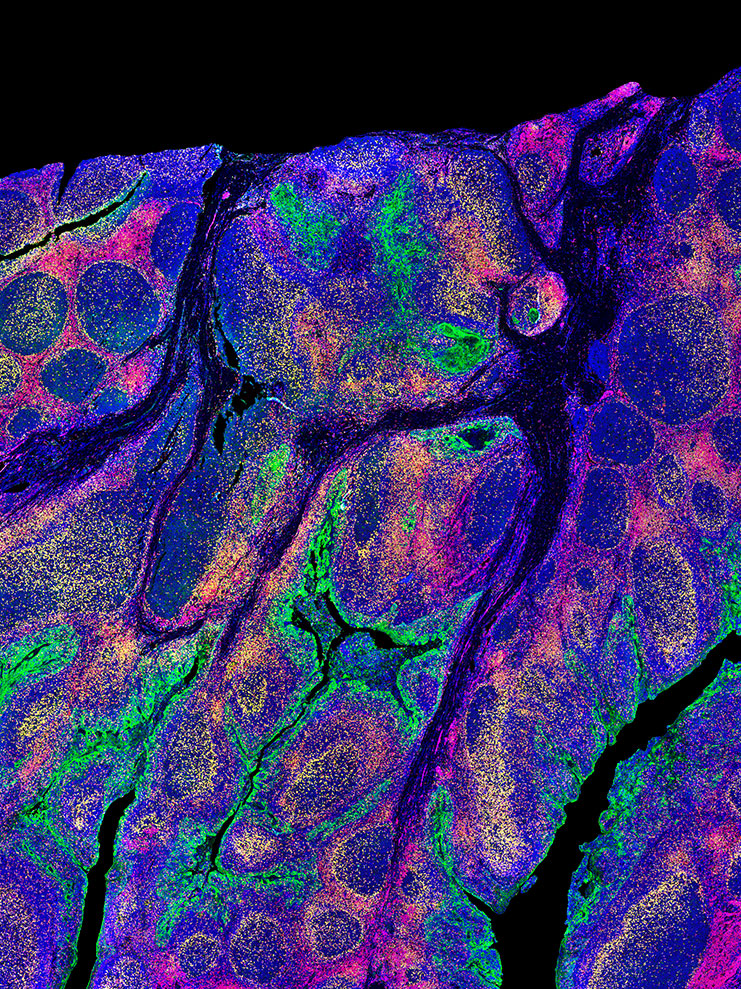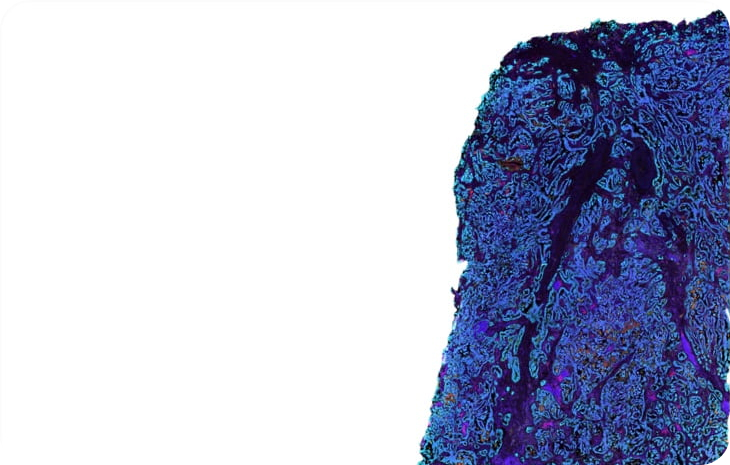
Namrata S. Patil et. al., 2022
Intratumoral plasma cells predict out-comes to PD-L1 blockade in non-small cell lung cancer
Relevant for
Pharma, CROs, Biotech
Inhibitors of the programmed cell death-1 (PD-1/PD-L1) signaling axis are approved to treat non-small cell lung cancer (NSCLC) patients, based on their significant overall survival (OS) benefit. Using transcriptomic analysis of 891 NSCLC tumors from patients treated with either the PD-L1 inhibitor atezolizumab or chemotherapy from two large randomized clinical trials, we find a significant B cell association with extended OS with PD-L1 blockade, independent of CD8+ T cell signals. We then derive gene signatures corresponding to the dominant B cell subsets present in NSCLC from single-cell RNA sequencing (RNA-seq) data. Importantly, we find increased plasma cell signatures to be predictive of OS in patients treated with atezolizumab, but not chemotherapy. B and plasma cells are also associated with the presence of tertiary lymphoid structures and organized lymphoid aggregates. Our results suggest an important contribution of B and plasma cells to the efficacy of PD-L1 blockade in NSCLC.
What is the problem?
There remains a significant need to understand the biology of response and resistance and the role of infiltrating immune cells in response to PD-1/PD-L1
While inhibitors of the programmed cell death-1 (PD-1/PD-L1) signaling axis are approved to treat non-small cell lung cancer (NSCLC) patients, most NSCLC patients do not respond to PD-(L)1 blockade as single agents, and intratumoral immune infiltrates involved in the response to these therapies remain poorly characterized. There remains a significant need to understand the biology of response and resistance and the role of infiltrating immune cells. Recent studies have identified an association between increased B cell infiltration, along with the presence of tertiary lymphoid structures (TLSs) as to an improved response to immunotherapy in tumors from melanoma, soft tissue sarcoma and renal cell carcinoma patients. The group wished to explore whether intratumoral B cells are beneficial specifically in the context of PD-(L)1 blockade or are a general marker of a better prognosis in metastatic NSCLC.
.. using mIF, we find that tertiary lymphoid structures (TLSs) are generally surrounded by plasma cells…these data suggest that tumors with high plasma cell infiltration identify tumors with TLS or TLS-like structures that can provide sustained tumor killing once stimulated by checkpoint inhibition
Results
Using InSituPlex technology mIF intratumoral enrichment of the plasma cell signature was associated with the presence of TLSs
Three populations of intratumoral B and plasma cells ientified by scRNA-seq in NSCLC, Plasma cells show the strongest predictive association with OS to PD-L1 blockade, Plasma cell benefits are independent of intratumoral CD8 T cells and PD-L1 expression and B and plasma cells are present in tertiary lymphoid structures in NSCLC tumors (as determined by multiplexed Immunofluiorescence).
The group analyzed the transcriptomes of 891 pre-treatment tumors from two randomized clinical trials of atezolizumab versus chemotherapy (docetaxel) in NSCLC and identified a robust B and plasma cell signal associated with overall survival (OS) benefit in patients treated with atezolizumab, but not docetaxel, in both trials. The group then leveraged a large single-cell RNA sequencing (scRNA-seq) NSCLC dataset to identify specific transcriptional signatures for intratumoral follicular B cells, germinal center B cells, and plasma cells. Using InSituPlex technology mIF intratumoral enrichment of the plasma cell signature was associated with the presence of TLSs and/or lymphoid aggregates, supporting a specific spatial organization for B and plasma cell activity within tumors.


